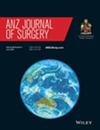Impact of Magseed® localization on re-excision rates of non-palpable breast cancers in an Australian regional hospital
Abstract
Background
Impalpable breast cancers have traditionally been localized under hook-wire guidance. Magseed® is an innovative method of breast cancer localization that consists of a tiny paramagnetic seed designed to enable more precise tumour localization and greater scheduling flexibility by decoupling the timing of radiological insertion and surgery. The primary outcome of this study was to evaluate whether the implementation of the Magseed® localization technique in our healthcare facility led to a reduction in re-excision rates.
Methods
A single institution retrospective evaluation was carried out for 96 women who underwent Magseed® localization (MSL) between 01 August 2020 and 30 April 2022. To allow direct comparison to the hospitals wire-guided localization (WGL) re-excision rates, data was collected from the Queensland Cancer Registry for patients who underwent WGL excision at our hospital between 01 January 2015 and 30 June 2020.
Results
A total of 105 Magseeds® were inserted in 96 patients with 95% placed within 1 mm of the target lesion. All Magseeds® markers were successfully retrieved. Re-excision rates were 14% and of the re-excisions only 24% (n = 3) had residual tumour in the re-excision specimen. In the preceding 5 years when hook-wires were used as the localization technique, the re-excision rate was 38%.
Conclusion
Magseed® technology is a safe and effective pre-operative localization method that has the potential to reduce re-excision rates for non-palpable breast lesions.


 求助内容:
求助内容: 应助结果提醒方式:
应助结果提醒方式:


